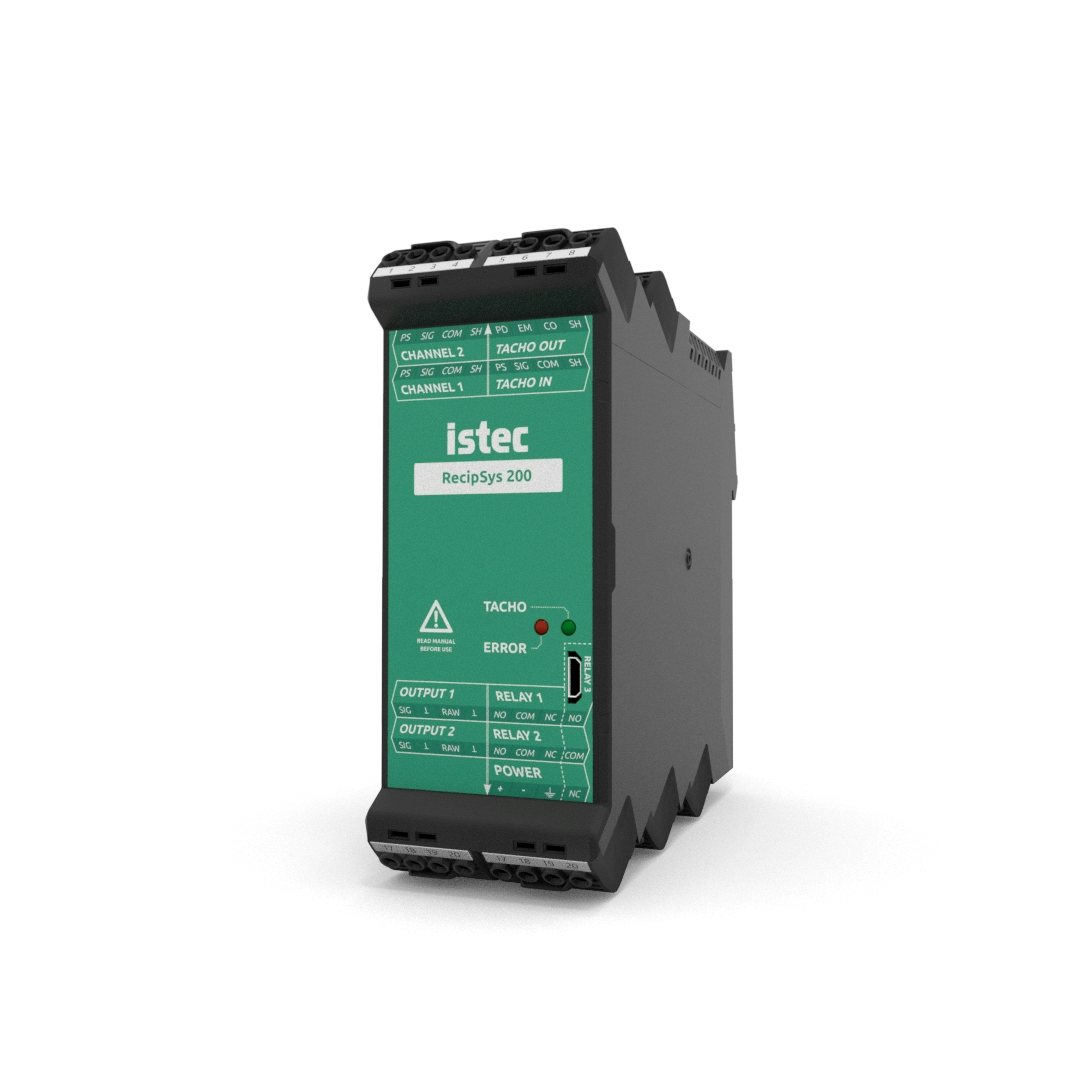« Back to product page of RecipSys 200
General FAQs
Yes, the RecipSys 200 can be installed to any reciprocating compressor but it is specially designed to provide rider band wear insights for small to medium sized reciprocating compressors where large and expensive monitoring systems are not financially justificated. The RecipSys 200 has a low financial impact and enables extending monitoring coverage to any small to medium reciprocating compressor.
The RecipSys200 has an operating speed range between 120 – 2400 RPM.
At this moment the RecipSys 200 is strictly for rod drop measurements only. Determining rod position is part of future developments.
Technical FAQs
Yes, you can connect multiple RecipSys 200 modules together, with 1 main tacho signal. You connect the signal from the eddy current sensor in the field, to the first RecipSys 200 module (master), on the TACHO IN. The 2nd RecipSys module receives the tacho signal from the first module, from the TACHO OUT, to the TACHO IN. And so on for multiple modules.
See manual for the connection diagram.
The angle is the number of degrees from the tacho trigger edge. This is a fixed point for every cylinder on the compressor. This needs to be established once. Typical way of determining the angle is: rotate the crankshaft until the hole is in front of the tacho sensor, note the cylinder position and movement direction, define the ideal measurement position and calculate the trigger angle between these points.
Yes, the RecipSys200 accepts any kind of eddy current type system and the sensitivity can be programmed accordingly. Example with a sensor with a sensitivity of 200 mV/mil. In the RecipSys200 the sensitivity is programmed in mm, so in this case this would be 7,87 mV/mil when the rod is made of Steel 4140. After adjusting the probe to the desired gap, the offset value (in voltage) has to be programmed, that the RecipSys200 uses in the rod drop calculations.
It is always preferred that the manufacturer of the compressor provides the lowest acceptable clearances between the piston and the casing. In other words; how far the rider bands can wear. Generally this information is available in the machines documentation. The manufacturers have in depth knowledge of the machine, the dimensions and therefor the clearances.

